|
Visiting
Chianti Classico
Part 1: Introduction
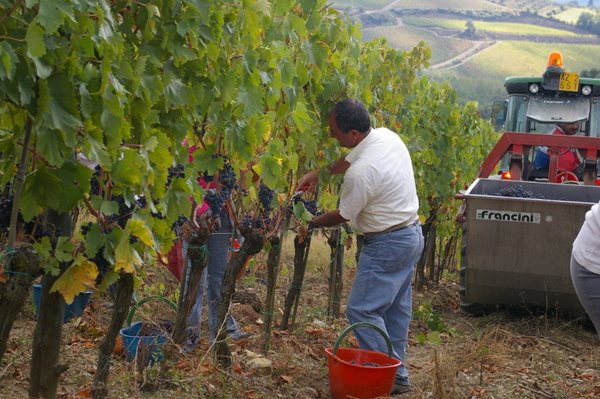
There is one
drawback to visiting a wine region at harvest time: everyone is busy
with more important matters than entertaining journalists –
namely, getting their grapes in and making wine. But this
disadvantage is outweighed by the massive plus of seeing grapes
being picked and processed, which for a wine nut like me is just so
exciting.
In October I
visited Chianti Classico country, on a trip organized by the
Consorzio, the official body of the region. Tuscany, with its gently
rolling hills, is beautiful most of the year, but in the gentle
October sunshine, with pickers in the vineyards, it has a particular
beauty.
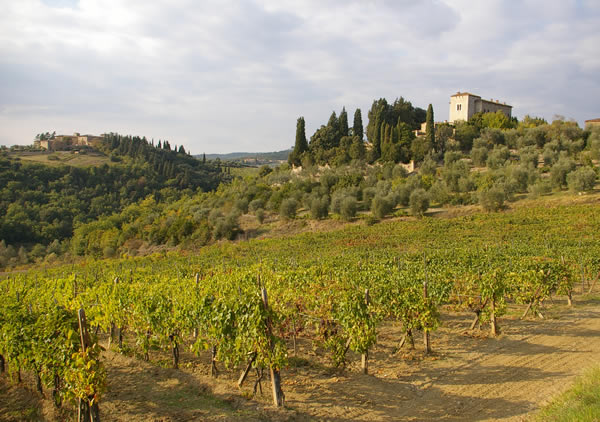
There’s no
getting away from it: Tuscany is utterly seductive, and the Chianti
Classico region, in the heart of the province between Florence and
Siena, is a wonderful place to spend a few days. The hill-top
villages and scattered farmhouses blend seamlessly into the
landscape, and the whole place has a real sense of history. And then
there’s the food. It seems as if it’s hard to eat badly here,
although I’m sure it must be possible.
The visit began
at the Consorzio for an introduction to the region and an overview
of the progress made in Chianti Classico in recent years.
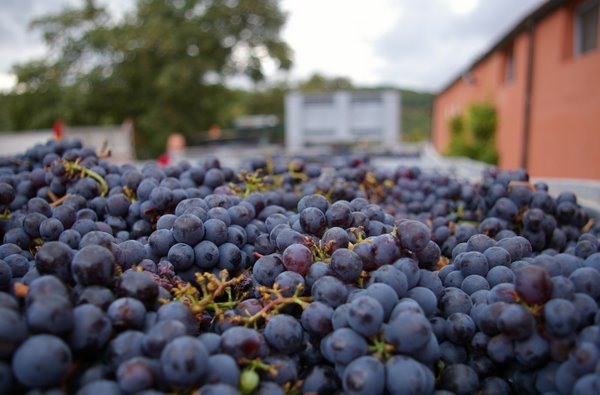
Some background.
The Chianti Classico area is the oldest, central part of Chianti
country. It’s slap bang in the middle of Tuscany and covers 70 000
hectares. 10 000 hectares of vines are planted, and 7100 of these
are Chianti Classico vineyards. Classico was the first of the DOCG
Chianti subregions; since then, seven more have been added (you’ll
probably recognize names such as Colli Senesi or Ruffina appended to
Chianti). Outside Chianti Classico there are 20 000 hectares of
vineyards in the broader Chianti area.
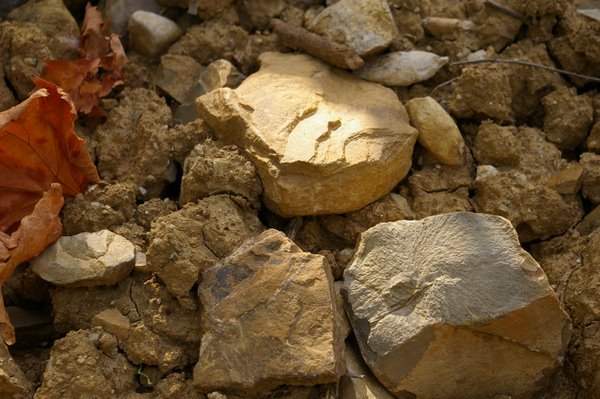
The soils vary
quite a bit, and it’s not easy to make a link between the geology
and the way the wine tastes. This is partly because the geological
map of the areas doesn’t correspond to the administrative
boundaries of the region. Some of the names you might come across
include:
-
Galestro, a
friable marl of layered limestone and sandstone
-
Macigno: a
hard grey/blue sandstone
-
Alberese:
compact clay and limestone mainly found in the south central
zone
-
Calcareous
tufa: found throughout the south
Altitude varies
from 250-600 metres, and the climate is continental, with cold
winters and hot summers. Summer temperatures can top 35 °C here,
and sometimes even reach 40. Rainfall is 700-800 mm annually, mainly
in Autumn and spring. Recently, the weather has become more
unpredictable, and harvest has been brought forward a little by
warmer growing season temperatures.
In the vineyards,
the viticulture is fairly standard. The vines are grown on vertical
trellises and pruning is single or double Guyot (can pruning,
leaving one or two canes – last years shoots) or spur-pruned
cordon (where the vine has permanent arms with a number of short two
or three bud spurs left on them). There's a variation on the Guyot
theme that's called archetto Toscano (archetto = bow), which is
where a bend in the cane limits the vigour of the end shoot, which
is typically more vigorous in cane-pruned vines.
Tilling is widely
practiced, although cover-cropping is now increasingly common,
allowing the vineyards to be worked when they are wet, and
preventing erosion. Many different planting densities have been
tried, but 4500-6000 plants per hectare seems to work best.
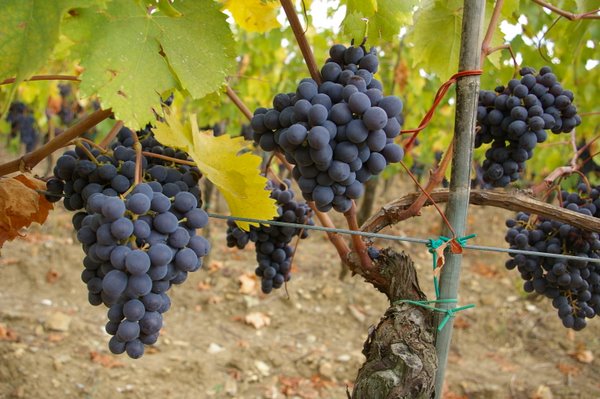
But the key to
Chianti is Sangiovese, the red grape variety on which Chianti is
based. 20 years ago, it looked like high-end Tuscan producers would
move away from Sangiovese towards Bordeaux grapes such as Cabernet
Sauvignon and Merlot. Accompanying this shift was the use of new
barriques, as opposed to the more traditional Botti – large oak
casks made typically of Slavonian oak. Indeed, these have been the
two 'fault lines' in the Tuscan fine wine scene: tradition versus
modernity expressed in terms of both grape varieties and oak use.
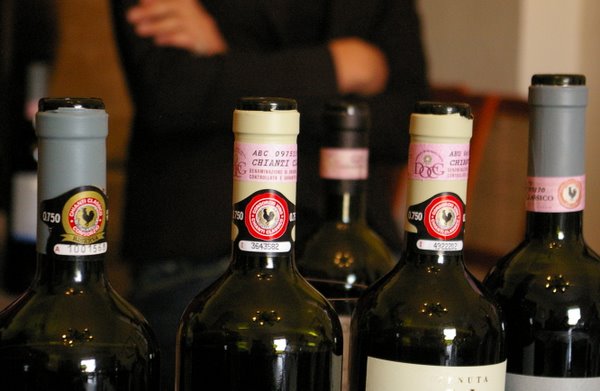
The modernists
looked to be winning, with new 'supertuscan' wines achieving
critical acclaim. These wines had to be sold as IGT Toscana, with no
mention of Chianti on them. But there's been a shift of late back to
making top wines from just (or mostly) Sangiovese. The rules have
recently changed a bit so that in Chianti Classico it is now
possible to make a varietal Sangiovese (bizarrely, it wasn't before
– you had to include a small proportion of other varieties), and
it is lawful to have up to 20% of other varieties in the blend.
These could be the native grapes Canaiolo and Colorino (a teinturier
variety with red flesh) or Merlot and Cabernet Sauvignon.
Despite this and
previous rule relaxations, which would have brought some of the
supertuscans back into the fold, it is common to find high-end
producers with both Chianti Classico Riservas and IGT wines at the
top of their portfolio. This is because IGT wines now have a sort of
cachet to them, even though it is supposedly a lesser designation.
Sangiovese is a
difficult variety, but one with bags of personality. However, it is
hard to determine how much of the character of Chianti Classico
comes from the grape variety and how much from the terroir. What do
I mean by this? Well, Sangioivese travels badly and rarely produces
more than barely adequate wines outside Tuscany. And when other red
varieties such as Cabernet Sauvignon and Merlot are planted in
Tuscany, they seem to have more Tuscan character than they do
varietal character. There's something about Tuscany that imprints
itself on the wines.
There's been a
lot of recent work on the various clones of Sangiovese by the
Consorzio. Sangiovese was first properly documented in the 15th
century. It’s difficult to cultivate, and is genetically unstable
(a bit like Pinot Noir), which means that clones differ widely in
their performance. There are two basic types: grosso (also known as
dolco or gentile) and piccolo (also known as forte or montanino). As
well as this, there are loads of synonyms: Brunello, Montepulciano,
Morellino, Pignolo, Sangioveto, Prugnolo gentile and so on.
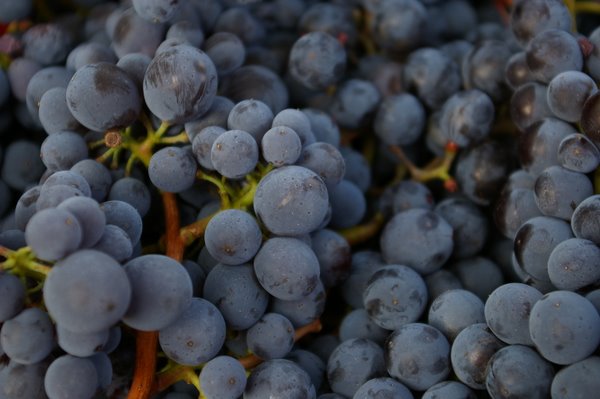
In the 1970s
there was a revolution of viticulture in Chianti, but while the
vineyards were renovated they were replanted with clones aiming at
high production, with little colour. The move now is to replace
these with clones that have small bunches with small berries, and in
which the berries aren’t packed closely together, which makes them
more disease susceptible. Currently 60 clones are authorized for
planting.
In 2000 the
Consorzio started a project looking at identifying the best clones,
to make these available to growers. They have 1.5 million plants of
these new clones which they planted in 2001. The project began with
239 clones, and this has been whittled down to 7 that are recognized
to be superior.
Finally, some
thoughts on marketing. Chianti is one of those wine regions where
the appellation is used as a brand. Very few consumers will know the
names of any Tuscan wine producers, but they will likely recognize
the name ‘Chianti’. For older consumers, this might be
associated with the old-style flask-like Chianti bottle in wicker
baskets (some supermarkets still sell this), but for most, their
experience of Chianti will be of an inexpensive supermarket version.
These wines are simple, a little bit rustic, and generally rather
charmless.
But what about
Chianti Classico? Will this work as a brand in a similar way? I
suspect not. ‘Classico’ appended to ‘Chianti’ might sound a
bit grander, a bit like the widespread use of the term ‘Reserve’
on new world wines with aspirations. Why? Because the sorts of
consumers who are going to eschew £4-6 Chianti for £10-18 Chianti
Classico will be using more sophisticated and reliable buying cues
such as the producer name or a wine merchant’s hand sell to help
them make their choice.
And as for
breaking Chianti Classico up into its various sub-regions, I don’t
see the point. The only sensible reason to have a geographical
indicator for wine is where that particular locale produces wines
with distinct character. Now if you can tell me what the differences
are between the wines from Castelnuovo and Gaiole, and back that up
with some examples of this regional character, then I’ll admit you
have a point. But even then, the message might be getting just a
little too difficult for all consumers.
Winegrowers the
world over see regionality as the key for differentiating their
product in the market place and charging higher prices for it. But
this regionality has to be accessible to the people buying the
wines, and even then, there’s a strong chance of confusing
them. And as for charging higher prices, you need to ask whether
there is a market there for more expensive wine from your region, no
matter how good that wine might be.
While I’m at
it, one further point. Chianti Classico will only work as a brand if
the name on the bottle is a reliable guide to quality. Chianti
Classico must be consistently good if it is to be of value as a
purchasing cue, and the Consorzio must make sure that every bottle
reaching the market with this brand is of sufficient quality,
something which is very hard to regulate. The biggest enemy of
Chianti Classico is inexpensive Chianti Classico that has no real
merit to it, and which therefore devalues the brand.
So I begin my
exploration of Chianti Classico with a visit to one of the top
estates of the region, Fontodi.
CHIANTI
SERIES
 Part
1: Introduction Part
1: Introduction
 Part
2: Fontodi Part
2: Fontodi
 Part
3: Castello di Querceto Part
3: Castello di Querceto
 Part
4: Castello della Paneretta Part
4: Castello della Paneretta
 Part
5: Bibbiano Part
5: Bibbiano
 Part
6: Fattoria di Felsina Part
6: Fattoria di Felsina
 Part
7: Castell'in Villa Part
7: Castell'in Villa
 Part
8: Palazzino Part
8: Palazzino
 Part
9: Barone Ricasoli Part
9: Barone Ricasoli
 Part
10: Colle Lungo Part
10: Colle Lungo
 Part
11: Vicchiomaggio Part
11: Vicchiomaggio
Wines
tasted 10/08
Find these wines with wine-searcher.com
Back
to top
|